

April showers bring…water infiltration woes. This is the time of year to focus on preventative maintenance that can minimize the potential for water infiltration. There is a grim reality to the value of cost avoidance that proactive maintenance measures provide compared to the high cost and resident dissatisfaction with repair work.

J. Hershey Building Consultants is proud of our success in helping many management companies identify the root cause of water infiltration issues. We also proactively include issue identification in our reserve studies and property assessments. We showcase our superior construction and maintenance understanding in our reporting, hence our “autographed with excellence” slogan.
As always, for all your consulting, design, construction and community association needs please do not hesitate to contact me at 844-543-7743 or jmh@jhersheygroup.com.
Sincerely,
John
John Hershey, AIA, NCARB, LEED AP, RS, CAI Educated Business Partner
“My satisfaction comes from solving complex issues and being the “go to” professional for our Clients’ needs.”

The pictures below are good examples of why advanced construction understanding and a thorough approach to any site visit is a hallmark of J. Hershey Building Consultants and a benefit to our clients.
Water has to flow across a structure, within a structure, and around a structure. The type of brick cladding below is very commonly used. There is an air space between the brick and the wall structure which allows water when it gets in (via cracks, mortar, etc) to flow down and exit via weep holes. In the examples below the water would have moved down to the overhead garage door (left) and the window (right), hit the flashing and wicked out between the lip of the flashing and the brick. Water that found an entrance would have also found an exit. However, in these examples the space between the lip of the flashing and the brick was caulked closed. A common mistake, but one that will trap water in between the brick and the interior wall, leaving the water to find another way out and likely leading to interior wall damage.
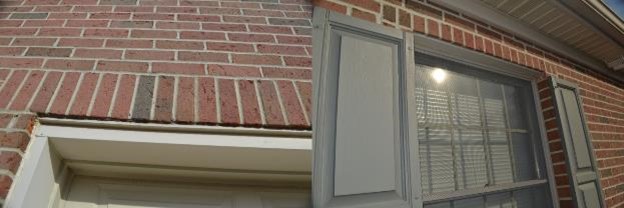
Another example is shown below to highlight the need to pay attention not only to the path of water, but to the rate of movement. The garage roof below is likely ponding because there is debris blocking the drain system. Note the tree overhanging the garage, which is an attractive feature, but does mean the roof drain will require more frequent cleaning to ensure water can drain easily. Excessive ponding shortens the useful life of any roof.

Below are examples where we have proactively flagged poor ground waterflow. In the left picture the swale is still intact, collecting water between the houses so it moves away from foundations in that area. However, the garden feature prevents water from flowing out toward front yards. The second picture shows the absence of a swale, and a sideways slope down toward the foundation.
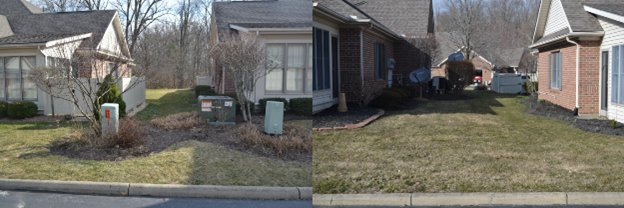
J. Hershey Building Consultants has helped many clients understand their water infiltration issues. We can observe these situations as part of a full Reserve Study or as a separate inspection. Our site visits are followed up by a written report detailing our findings and recommendations for repair.
J. Hershey Building Consultants fully understands the importance of water movement and ground maintenance to presenting an attractive property which stabilizes and even builds property values. Our reserve studies routinely include a thorough inspection of the grounds and exterior beyond residential structures. Many properties now include a retention pond to offset loss of ground to absorb water as a result of building. The perimeter of the retention pond below is not adequately edged to prevent erosion. Over time sediment build up in the pond will require costly dredging. If the shoreline is finished with a stone riprap, the pond will be more attractive and erosion will be prevented, maintaining property value and reducing risk of future costs.

Continuing our examples related to water movement through property, below are examples of storm drain placement. Inspections to ensure water flows well through the property is essential to avoid standing water issues. These storm drains are from left to right; positioned too low, too close to a mulched landscaped bed, and in concrete without adequate control joints. These conditions which will require extra maintenance can easily be avoided. J. Hershey Building Consultants regularly flag opportunities to reduce or avoid maintenance issues in addition to identifying maintenance to plan funds toward.

Below are examples of asphalt in need of attention. Pavement settlement and heaving are issues which contribute to safety and liability concerns. We often assist communities with the engineering documents for pavement repairs which need to consider the resident experience during maintenance, safety, and potential phasing of repair in keeping with the reserve budget.
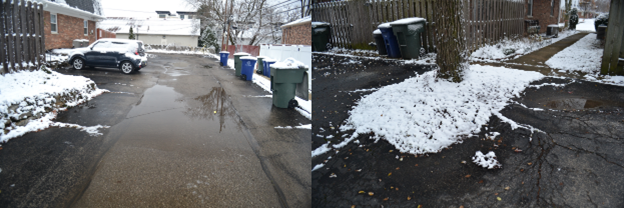
Contact us today at 844-543-7743 or simply fill out our online Reserve/Transition Study Request Form. With budget season right around the corner, now is the time to complete your Reserve or Transition Study so you have an accurate and detailed funding plan. We perform Reserve and Transition Studies on all sizes of community associations from single family HOAs to high rise condominiums and every residential building type in between!

Fortunately, there were no serious injuries when cars drove into these buildings. The accidents did present unique structural considerations vs the more usual renovation project. J. Hershey Architecture can provide timely analyses and structural designs for the necessary repairs and permitting for your restaurant, home, or townhome.
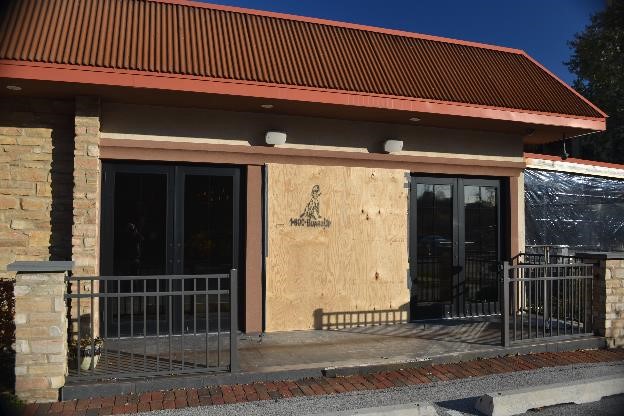
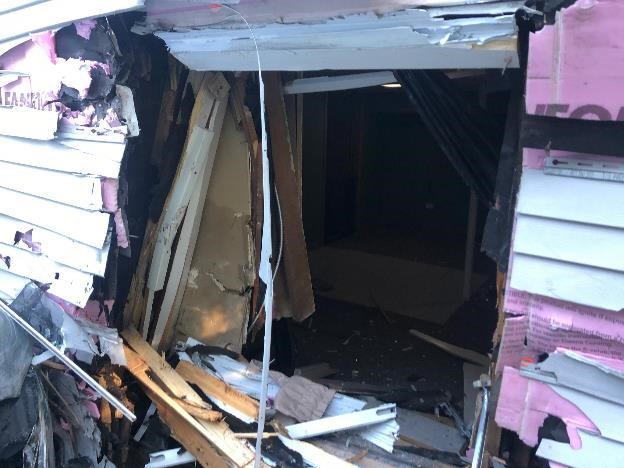
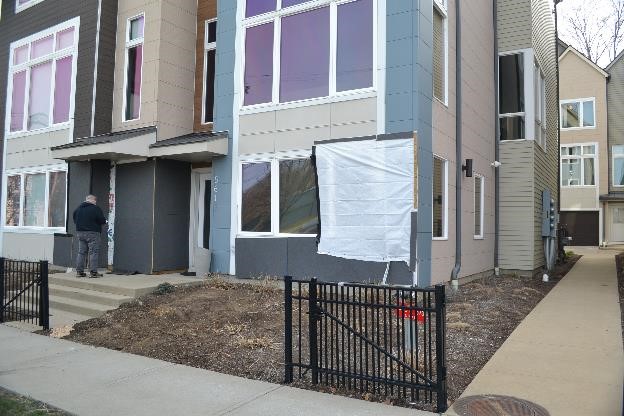
While we certainly hope these situations remain rare, we offer the expertise and understanding to help clients with atypical structural issues.
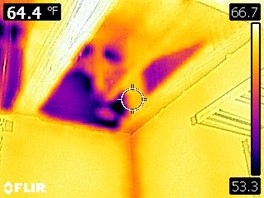
I recently had a discussion with a board president for a property planning to replace balconies in phases across a few years. Our discussion was specific to the need for 3rd party construction management. I maintain that for complex or multi-year projects hiring a qualified 3rd party to provide construction management is a good spend that helps everyone. The residents have a neutral and qualified 3rd party enabling communication and pushing for the deadline of the project. The contractors have someone helping with problem solving and getting decisions faster, and have another expert to explain to the board the logic of decisions or changes made. The board has someone focused on the job that is mitigating risk, helping to avoid unwarranted change orders, making sure the final project is not just quality but built to code, and within budget. This board president agreed, citing that it didn’t make sense to spend that kind of money on property improvement and not do all we could to optimize the process with construction management.

J. Hershey Building Consultants was hired to perform a Reserve/Transition study for a newer development. By reviewing the developer plans we identified missing elements for which the developer is responsible and will likely save the Association money.
Below left is a picture of the monument capstone which should be sealed and not have an open gap beneath it. Upon further inspection we found the capstone was foam, not stone. We admit that was a new one for us and a helpful finding for the Board. Pic below right shows an unfinished storm water outlet which should be encased as a concrete culvert and discharge onto stone riprap.


J. Hershey Building Consultants was asked to identify a solution to pipes that kept freezing in multiple units along one side of a multi-unit residential building. The client had tried other solutions but the pipes froze again. Below left picture shows a masonry wall with a crack in masonry and mortar joint. It should be noted this wall faces an open field with no windbreak. Below right shows copper water supply pipes placed very near to that external wall and no insulation.
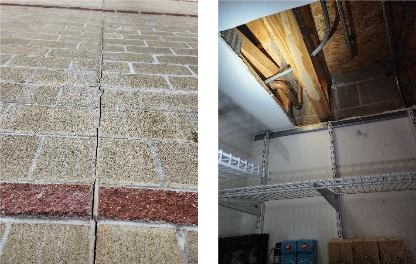
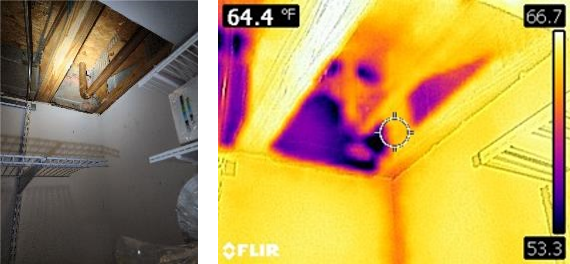
J Hershey Building Consultants was hired to evaluate a water infiltration issue across multiple units in a 6 story condominium building. In this case, we identified interior condensation, a probable plumbing leak, and other issues causing water damage. Below left picture shows water damage near a vertical HVAC (water pipe heat system) chase which was noted in the same place in other units. Below right the same type of HVAC chase at an exterior wall. These vertical chases enclose pipes which distribute temperature controlled water to radiators at the residential units at each floor. Given the age of the building the pipes are at the end of their useful life..
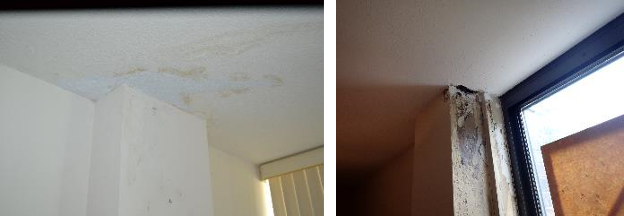
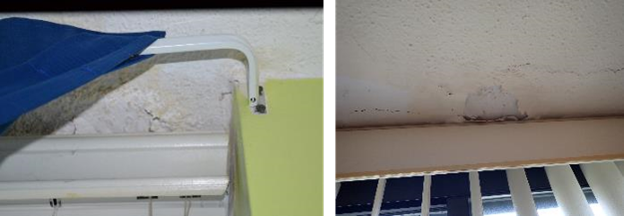
Let’s continue to improve our ability to proactively maintain our properties!
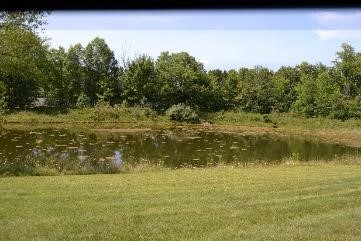
Our easy online Request For Proposal Forms can be accessed at the top right of the JHersheyGroup home page.

The weather extremes that we have been experiencing bear consideration when planning property upkeep, especially for older buildings. Most Associations are in planning season at this time of the year. Hopefully, they are referring to a relatively recent reserve study to inform maintenance priorities of the property as spending is planned. If your buildings are more than 20 yrs old there are upgrades worth considering proactively such as improved insulation or adding details to resist water infiltration. I recommend boards have an extreme weather conversation as part of their reserve planning discussions.

J. Hershey Building Consultants was hired to provide oversight of a roofing replacement project. We perform calculations for every roofing project, which either confirms existing specs are in code, or as in this example, enables new specs to improve the functionality of the attic space.
Below pics show curling of shingles, which signal wear. Weather, quality of roofing material, and age of roofing all impact the useful lifespan of a roof.
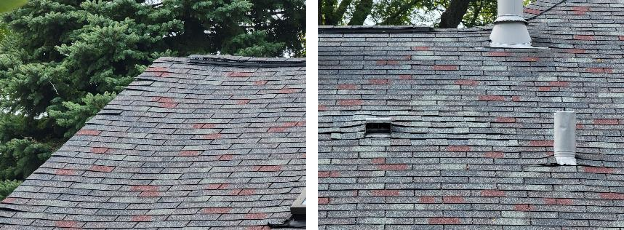
Pics below show mid roof vents added. This approach can be used if there is no more room for soffit vents. Ridge and soffit vents are sometimes still not enough for adequate attic airflow.

J Hershey Building Consultants was hired to evaluate a water infiltration issue in a unit on the ground floor of a two story condominium building. Our assessment determined that there was not an infiltration issue. Instead, we identified an interior condensation issue within the unit. Furniture against an outside wall or window treatments can reduce adequate airflow and trap humidity, creating conditions such as seen in pictures below.
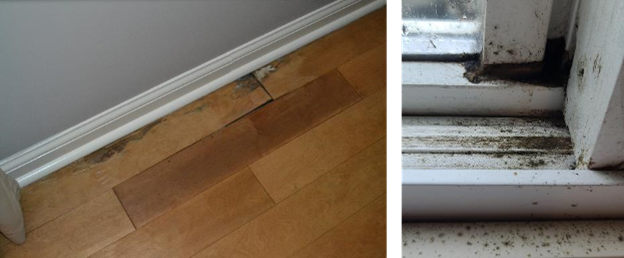
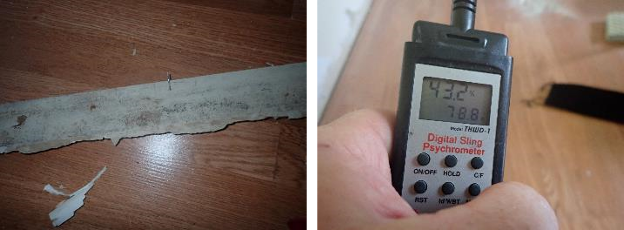
More on interior condensation:
The Association may recommend to residents that:

J Hershey Architecture is working with a client to build a home on Lake Chautauqua in New York. Ultimately, this home will be a two story home built around a massive stone fireplace. In the picture below, note the use of insulated concrete foundation ( ICF) blocks. These are hollow blocks of insulation that are fit together then filled with concrete, providing energy efficiency and noise reduction.
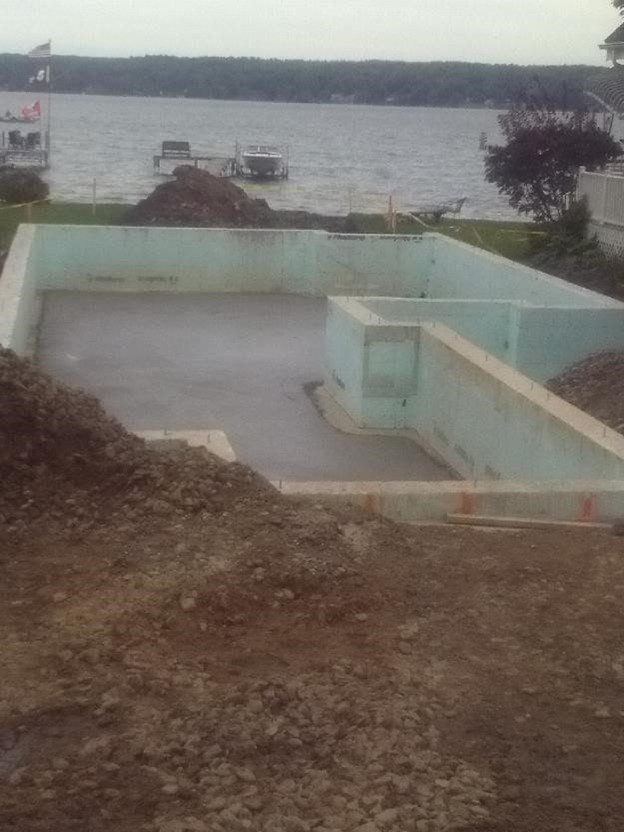
We are also working with a client in Ohio on the design of their vacation home on the shore of Lake Erie. Presently we are in the early design stage. The pic below shows their future view.
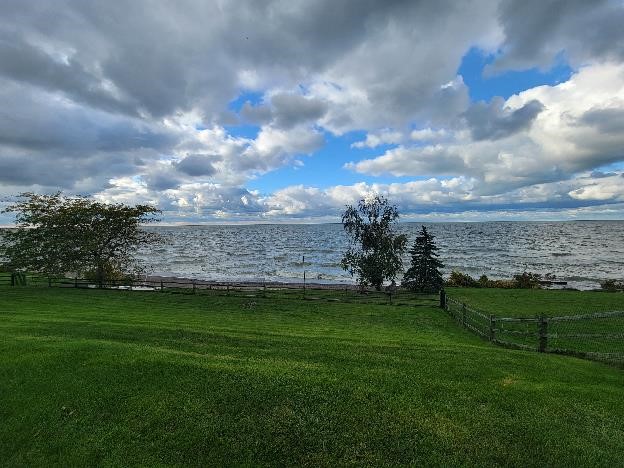
Let’s continue to improve our ability to proactively maintain our properties!
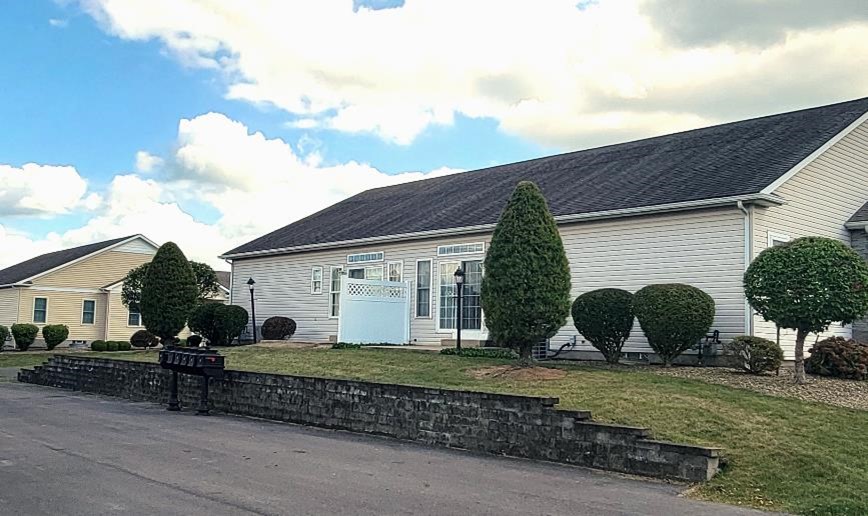
Our easy online Request For Proposal Forms can be accessed at the top right of the JHersheyGroup home page.
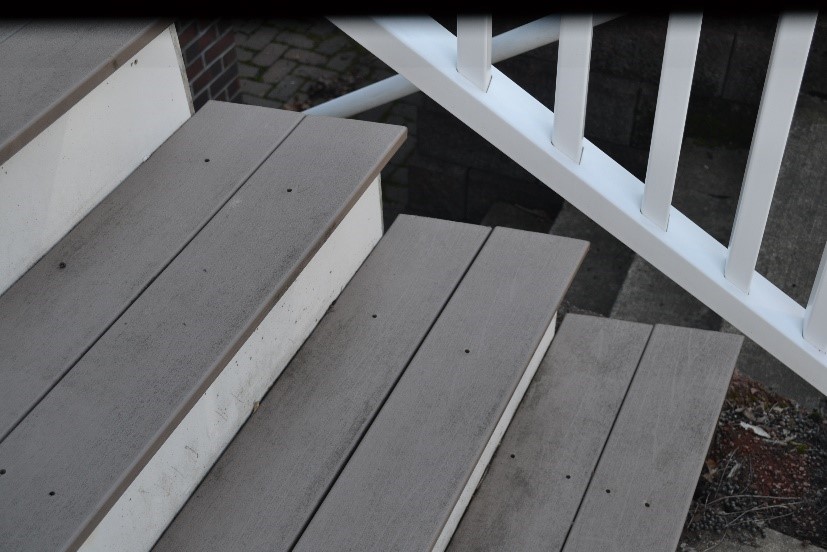
When it comes to maintaining properties the wish/want/need list often outpaces the budget. This serves as a great opportunity to reinforce the importance of preventative maintenance as an important investment. Rectifying any code violation or safety concerns is another solid investment. As we approach budget season, please make sure these categories are included in your budget. It’s the best way to make sure Association dollars work hard.
We at J. Hershey Group try to make our newsletters educational as we also showcase our work. Is there a property maintenance or reserve study topic you’d like to see in an upcoming newsletter? We’d love to hear from you!

In addition to liability issues, life safety and code violations left unaddressed can impact a community’s ability to secure loans. J. Hershey Building Consultants have repeatedly observed a life safety problem across multiple communities recently as we conducted reserve studies.
Below left shows a short step up to a rear entry which should have a handrail. Generally, stairs of 4 or more risers need a handrail. The entry deck itself does not necessarily require railing as, generally, decks lower than 30 inches do not require a guard rail per most codes. Below right shows a handrail with differing heights above the treads which means the handrail is not at an even height as one walks up the stairs, and is a code violation.
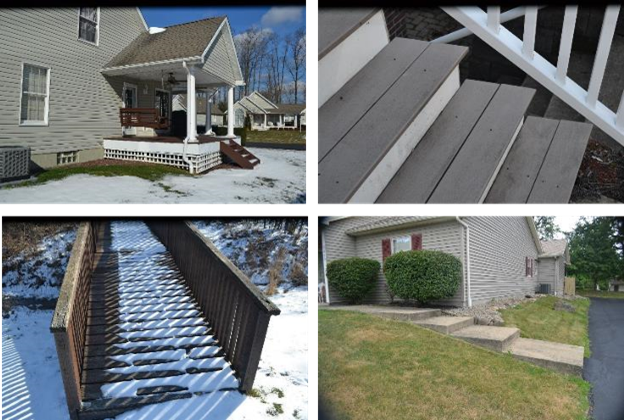
Above left shows a pathway bridge over a creekbed. The railing on this bridge is too low to prevent falls, especially considering the location and liklihood of those crossing the bridge to lean over to view water running below. Above right shows a walkway that has been stepped to the slope of the ground. These “steps” should be replaced to be level, of uniform height, and of uniform depth.
J. Hershey Building Consultants see many examples of proactive maintenance opportunities as we do site evaluations or reserve/transition studies. Proactive maintenance saves money and increases the appeal of the community and the property.
Foundation cracks, especially in mortar joints are inexpensive to repair. If not addressed, cracks in foundations can lead to water infiltration or get worse which can result in structural issues. Below pictures show visible cracks in mortar joints of foundations.
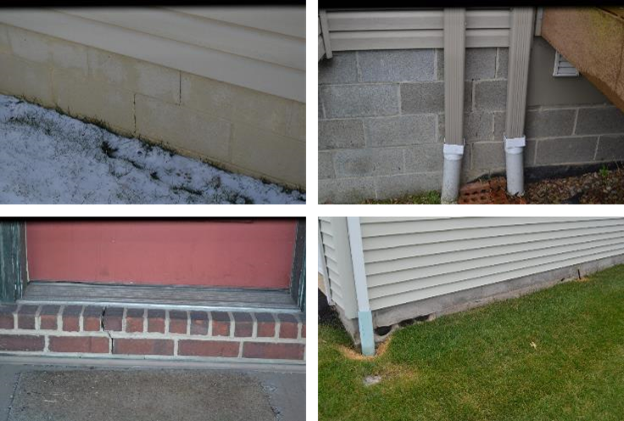

J Hershey Architecture was hired to evaluate, design new, and oversee construction by a community whose balconies had reached the end of their useful life. The old balconies were no longer safe. We introduced elements into the redesign that increased the safety and support of the new balconies.
Below left shows an example of the old balcony which had aged to the point of needing replacement. The other photos show various new connection details.
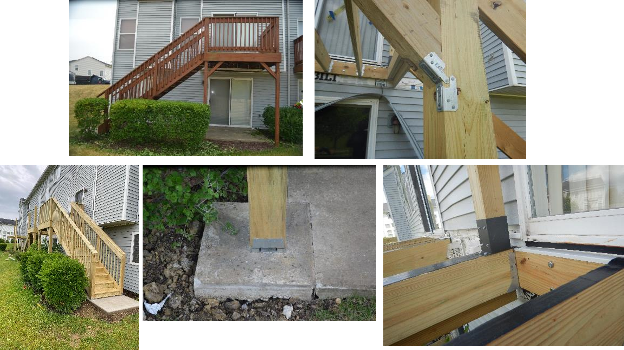
J Hershey Architecture is working with a community to rebuild a large parking garage that was destroyed by fire. The first big task was to fully clear all elements of the damaged garage.


The pictures above show the concrete floor fully removed and new outer walls beginning to take shape. Code improvements include fire suppression, ADA parking, and EV charging stations.
Let’s continue to improve our ability to proactively maintain our properties!

Our easy online Request For Proposal Forms can be accessed at the top right of the JHersheyGroup home page.
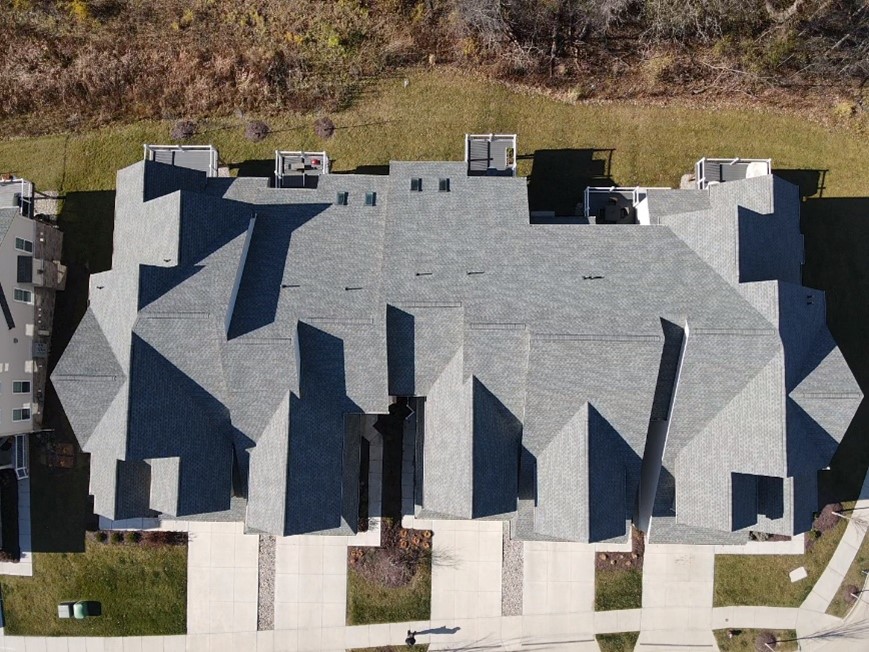
Our homes speak to our heads and our hearts. We all need well built, safe places to live but without beauty it is not a home. Our group is proud of delivering excellence on the former. Ultimately residential structures need to be maintained to be safe. As an architect, and an artist, I certainly appreciate how our homes are more complete and enjoyable with beauty. This month, as you walk your properties with the inevitable checklist, consider looking at the overall attractiveness of the building and the site. It matters to the residents.

J. Hershey Building Consultants is often hired to assess the condition of roofs on multi-unit properties. This type of assessment should always include inspection of the spaces under the roof. As you can see from the images below, these roofs were due for replacement. Below are some of the other issues identified:
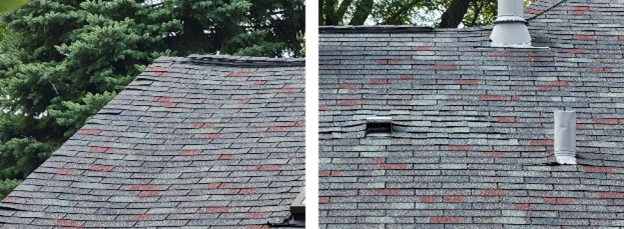

Inadequate insulation, or the incorrect insulation, not only contributes to costly heat loss but can also enable ice damming which can result in water infiltration. Ice damming also shortens the useful life of a roof. Below left gives an example of an inadequate insulation level.
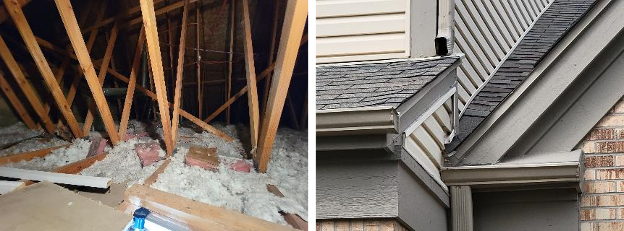
Roofing projects are a considerable expense for most properties. Many associations want to maximize the useful life of this investment by hiring an objective professional to monitor the quality of the work. J Hershey Building Consultants has worked with many associations to monitor re-roofing and roof repair projects
J. Hershey Building Consultants was hired to conduct a Transition Study for a new condo development. Transition studies are done as the developer is turning over property management to the association and identify existing property issues that the developer should address before considering construction complete. Transition studies help new associations by minimizing premature maintenance costs and maximizing useful life of the property elements.
Below pictures taken by drone show the rooflines of two different building styles in this development. Neat, right?!?
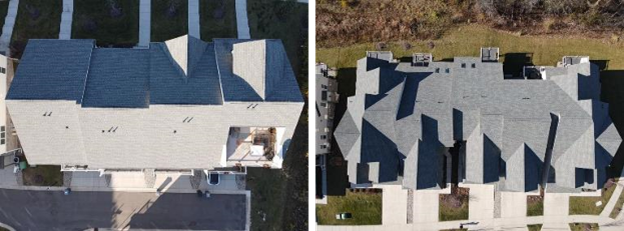
The photo below left shows exposed roof sheathing where the roof ridges intersect. These missing shingles will create water infiltration issues. The photo below right shows one of the damaged shingles found which, if left unnoticed, would have resulted in repair costs not anticipated.
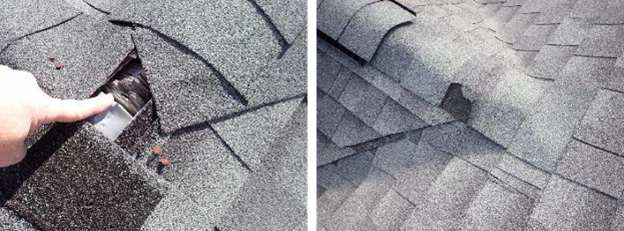
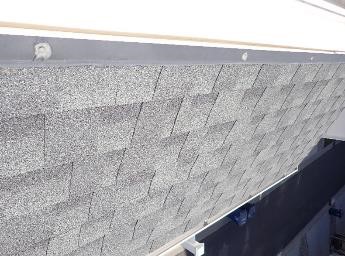
Let’s continue to improve our ability to proactively maintain our properties!

Our easy online Request For Proposal Forms can be accessed at the top right of the JHersheyGroup home page.
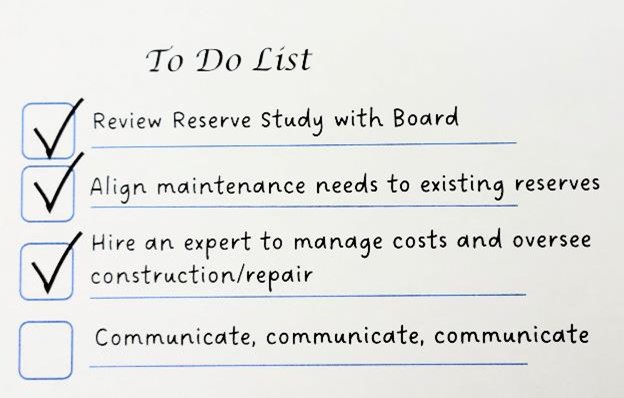
You have a completed Reserve Study, now what? An experienced reserve study specialist, working in partnership with community management, can help you and your association prioritize property maintenance needs while respecting current reserve limitations. This team should also not let the association hide from more urgent or more costly property improvement projects. How do you address the more complicated maintenance needs with a quality solution? Some reserve study specialists also provide design and construction administration services. The advantage of this type of specialist is that they have a deeper understanding of construction practices and can not only identify property needs, but help solve them.

Hiring an objective professional to oversee construction can improve the bid process, construction process, and final outcome. A construction administrator keeps all parties working together cohesively, brings their own expertise to monitor construction quality and timelines, stays focused on problem solving and cost management, and serves as point person communicating to the property manager and association. In most cases trade companies are glad to have a single person coordinating across the multiple trade timelines which reduces wait times to get questions answered.
J. Hershey Building Consultants has been hired to oversee the construction of a new clubhouse and outdoor pool. This project offers examples of the benefit of professional construction administration. Below left is the project in process. Below right shows a crack in the newly poured foundation. This crack might have been overlooked but was identified in time for the contractor to repair it before it was covered by finishing.
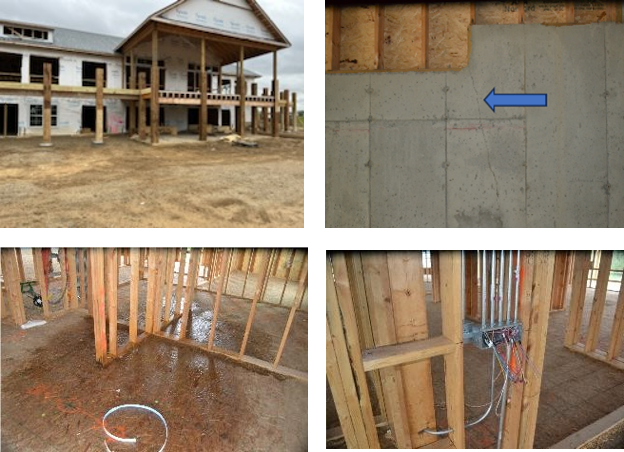
Above left shows water getting into the building from the roof above. A professional knows this is not a problem because the roofing is not yet complete and will not take up contractor time having this addressed. Above right shows rough (preliminary) electrical installation looking exactly as it should at that stage.
J. Hershey Building Consultants was called to help a community dealing with balcony structural and water damage issues. The first picture shows a balcony with too much distance between corner posts, resulting in a weak front rail that will not withstand much weight.

The middle picture above shows building damage resulting from water flowing toward the building rather than off the sides and front of the balcony. Repairs are designed to address structural and cosmetic water damage and balcony floors that pitch away from building.
J. Hershey Building Consultants conducted a water infiltraton analysis for an underground garage and discovered this had been an ongoing water leak since at least 2019, creating very unhappy residents. As a result, a steel support beam was badly corroded (pictures below) and will require temporary support until it can be reinforced and made safe to support the first floor of the building.
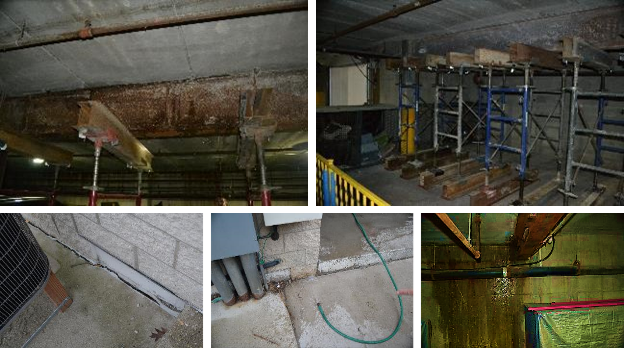
Our analysis identified multiple areas of caulk joints between the building and the sidewalk in need of repair (above left). To test these areas as the potential cause of the leak in the garage below, we ran water on the sidewalk, allowing it to flow into the pavement joints (above center). The picture above right shows the resulting wet wall which also allowed water to run along the steel support beam. Next step is to seal the gap between the building and the sidewalk, and reinforce that steel beam. Note that if this issue had been addressed sooner, the steel beam would not also need repair, and the residents wouldn’t be frustrated.
Let’s continue to improve our ability to proactively maintain our properties!
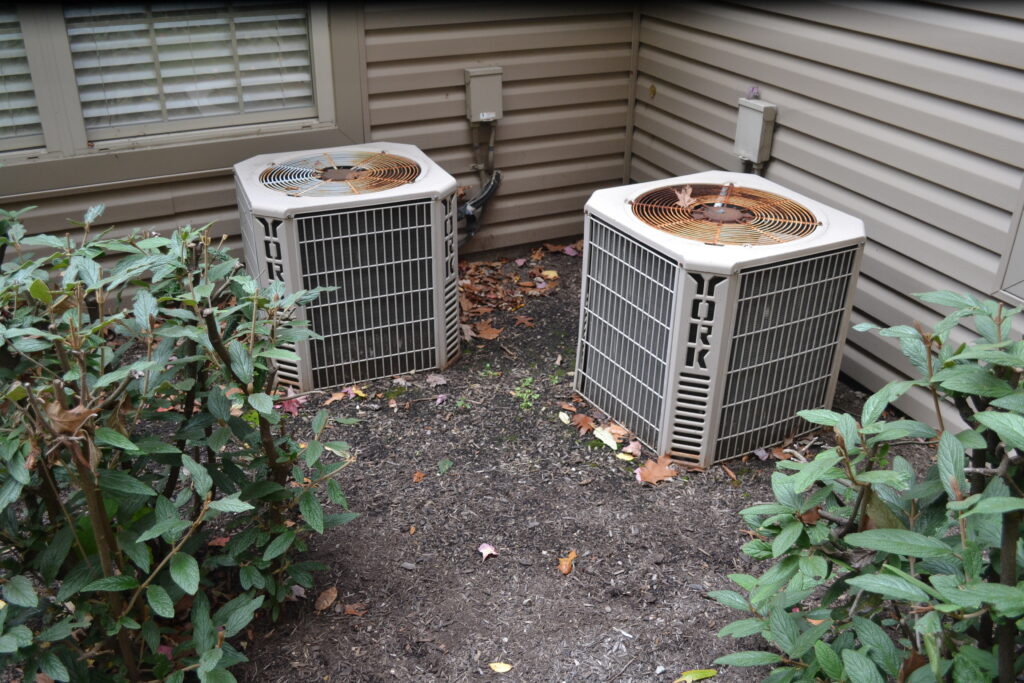
Our easy online Request For Proposal Forms can be accessed at the top right of the JHersheyGroup home page.

The weather extremes have made for an “interesting” summer, haven’t they? Any weather should remind us to be proactive with our properties. For properties that have been experiencing high heat and drought let’s keep an eye on our foundations and balcony supports. Uneven settlement can happen when the ground dries out and cracks. For properties experiencing heavy rain let’s check and be sure those flat roofs aren’t holding puddles and that the property site is successfully draining. Those challenged with smoke from wildfires should be aware that when windows have to stay closed, AC stays on so let’s make sure AC unit condensation is not creating issues. Like the old saying about the mail deliverer, neither smoke, nor heat, nor rain can stop us from diligently maintaining properties!

J. Hershey Building Consultants regularly conducts transition studies which help negotiate fair expectations for developer completion. A recent transition study found multiple areas of failed or missing landscaping which impact the overall appeal of the property and can add up to significant costs.
Pictures below show examples of trees and shrubs found to be dead, unhealthy, or not adequately supported. With over 1000 planted trees, replacement can be costly.
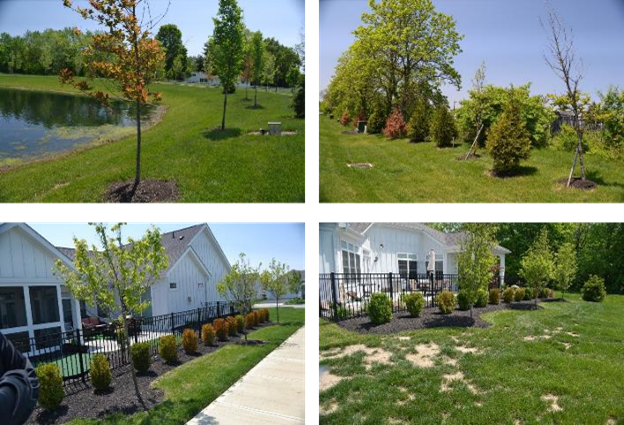
A transition study highlights those last items to be addressed by a contractor and saves the Association from spending unnecessary dollars.
J. Hershey Building Consultants completed a balcony evaluation for an Association concerned about the state of their balconies. Findings from the study pointed to cost efficiency by fully replacing balconies and stairs instead of doing repairs in pieces which would ultimately have cost more. Below left pic shows the balcony and stair design for over 25 homes. Below right shows one of the balcony floors, clearly weatherworn with a bowed front rail and warped deck boards.
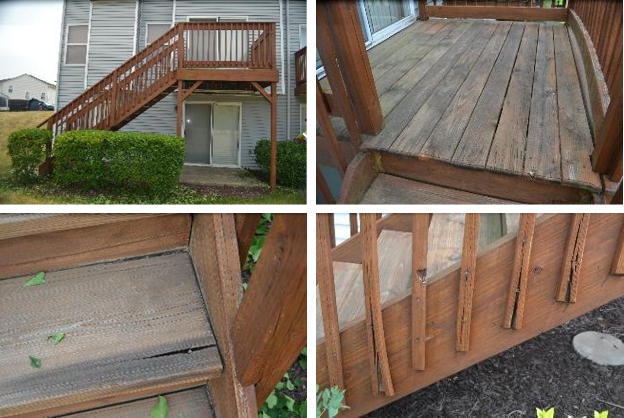
J. Hershey Building Consultants conduct reserve studies on all types of properties and encourage any reserve study to include a review of all bodies of water on the property. Importantly, if a property has water accessible to residents the Association and management company should speak with legal counsel to understand life safety issues any liability to the Association.
Our review of the property below identified sand and sediment along the shorelines, which could ultimately flow into and impact the storage capacity (important for detention and retention ponds) of any body of water.

Let’s continue to improve our ability to proactively maintain our properties!
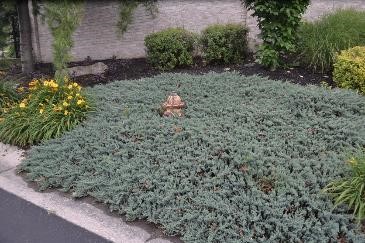

Thankfully, nobody was injured in this garage fire. J. Hershey Architecture is working with the Association and Property Management to update the original garage plans to provide permit and construction drawings. The bottom right picture shows the fully cleared space ready for new building to begin.

Our easy online Request For Proposal Forms can be accessed at the top right of the JHersheyGroup home page.
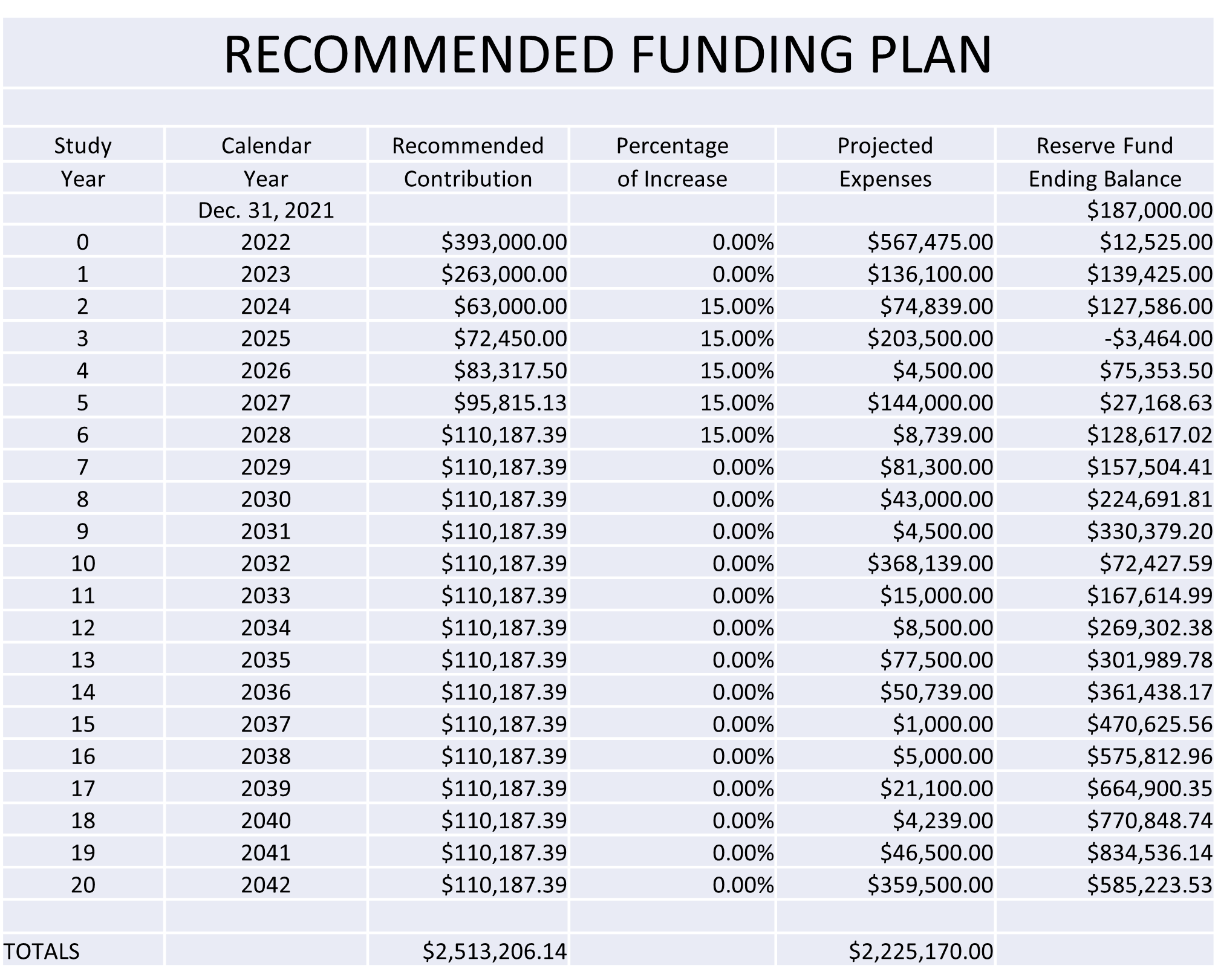
For many of us, this part of our calendar finds us planning out what we can or should tackle in the coming year. These planning conversations are better if they are informed by a fairly recent reserve study. Otherwise, a board risks using an outdated needs list or even prioritizing pet projects, whether consciously or not.
This planning task is even harder for a board that is accepting transfer of property management from a developer. The hope is that the property would have little or no obvious needs, but without a transition study the new board is moving forward with fixes that should be funded by the developer and are uninformed on what needs the next 5 – 10 years might hold.
See below for a some examples that may have been avoidable or easier to plan for if these boards had the benefit of a transition study.
***We at J. Hershey Group wish you all health and happiness in 2023!**

J. Hershey Building Consultants recently worked with a property needing balcony assessment and repair. The balconies were not very old and were already rotting. Our evaluation uncovered lack of a transition study, which could have identified issues earlier and saved the board this particular expense. In addition to inferior use of materials, these balconies were not built to code, and importantly had insufficient support for the front rail.
Below left is an example of the “before” balcony showing long stretch of rail needing additional support. These balconies were redesigned to be replaced with improved support and used composite materials. Below right shows a completed balcony example used to get village approval before proceeding.
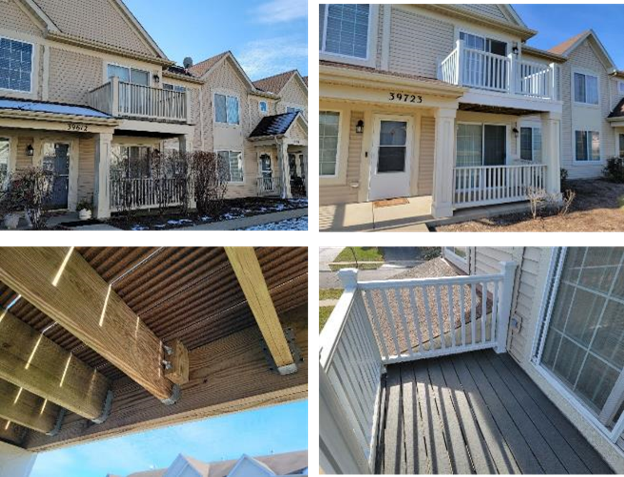
Above left shows the front center newel post fastened securely to the balcony structure. Above right shows the new composite material and addition of posts at the wall where earlier the sides simply screwed into the building. Happily, this property now has balconies that are safer, to code, and built to last.
J. Hershey Building Consultants regularly work with local municipalities governing building code requirements on behalf of their clients. This helps the board make sure work abides to code and helps the construction company get the approvals they need.
J. Hershey Building Consultants completed a reserve study for a fairly new development located on beautiful wooded land with hills. The site visit revealed what we consider to be inadequate deterrants over high retaining walls in multiple places. If this board had the benefit of a transition study many of these issues would have been identified for the developer to address prior to transitioning management to the board.
The picture below left shows a retaining wall that is already starting to fail, likely due to lack of weep holes to allow water through. Below right shows fencing meant to be a deterrant but the distance between fence posts is too far to prevent the fence from folding over.
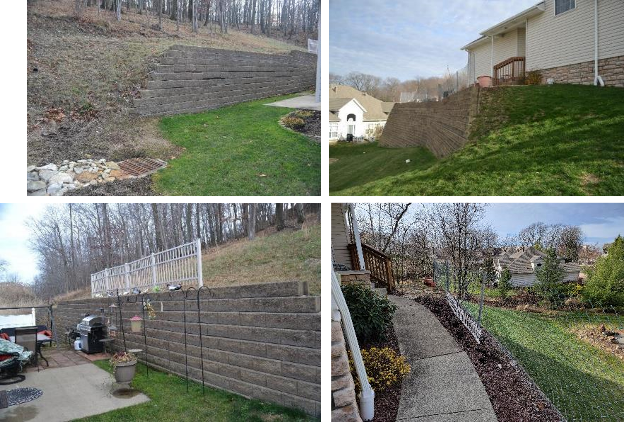
Above left picture fencing atop the retaining wall that should span the full length of the wall. Above right is yet another example of fencing used. This fencing needs more post supports or it will simply fold down.
We perform Reserve and Transition Studies on all sizes of community associations from single family HOAs to high rise condominiums and every residential building type in between.
Let’s continue to improve our ability to spot property needs!

Answer: End pillar is separating from main wall, likely a result of inadequate reinforcement. Long/tall brick walls require more structural support. Otherwise, wind or ground movement stresses on the wall will cause separation, which will only get worse over time.
| Now is the time to complete your Reserve or Transition Study so you have an accurate and detailed funding plan to improve or maintain your properties. We perform Reserve and Transition Studies on all sizes of community associations from single family HOAs to high rise condominiums and every residential building type in between. |

There are times when having property reviewed by an objective and expert third party is necessary. Outside expertise protects both sides in property related issues. An expert delivering a direct and unbiased assessment can eliminate future surprises, ensure a board is not taking on (or ignoring) necessary repairs, and even put to bed an ongoing grievance or concern.
This issue of The Blue Print highlights recent projects where J. Hershey Building Consultants have helped community associations by resolving issues, preventing unnecessary spending, or confirming construction quality.
**We at the J. Hershey Group have had the people of Florida very much on our minds. Sending best wishes and positive energy to colleagues and friends impacted by the recent hurricanes. **

This condo board discovered that a second floor unit owner had removed two interior walls without permit or following the prescribed process. J. Hershey Building Consultants was hired to review the work and ensure structural integrity, especially that the roof of the building was still adequately supported. The picture below left shows this unit entry as the top floor of the building. Below right shows the final result of removing the interior walls that had defined the kitchen space.

J. Hershey Building Consultants not only assess structural integrity in cases like these, but understand association by-laws, governing building code requirements, and the typical legal process. This enables us to efficiently move these conversations to pragmatic next steps.
J. Hershey Building Consultants was hired by a single unit owner to analyze a persistent leak in the mechanical closet. This leak had been going for over 15 months and across multiple contractors and many attempts to resolve. The unit entry floor was badly damaged, as well as the ceiling and walls of the mechanical closet. Both the unit owner and the board were frustrated.
The picture below right shows the building, the mechanical closet was leaking on the 4th floor. The unit immediately above showed no water infiltration. Below right you see the damage to the entry floor of the unit.
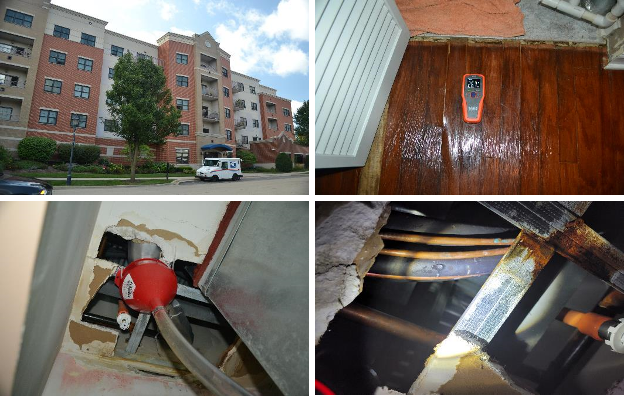
Above right shows a picture of the unit owner’s attempt to capture water by affixing a funnel to the mechanical room ceiling to catch the drip. Above right shows an active drip on the outside of insulated hose which is part of the mechanical chase. The source of the leak was identified as coming from a leak or hole in the common mechanical chase originating above this unit. The chase bends (see above right) right above this 4th floor mechanical room unit, allowing water to travel down the chase and dripping off the bend. If the chase did not bend the leak would simply follow the lines down to the chase drainage in the basement garage.
J. Hershey Building Consultants have a very strong track record of identifying the genesis of water infiltration, leading to successful resolution. To learn more about water infiltration, listen to a podcast via the link at the bottom of the newsletter. We also offer NCARB approved training on Water Infiltration.
Transition studies should be done whenever property ownership is being transferred from the developer to the association. Detailed findings enable negotiation of repairs/maintenance to be done before full transition, otherwise the association will be responsible for unplanned repairs. In this case a new property was transitioning from builder to community association oversight. Small and large issues were identified which enabled the association to push for improved quality or additional repair work and, importantly, corrected documentation.
The picture below left shows cracking and evidence of water infiltration in the entry sign to this development. Left unchecked, this sign would need constant repair to the stone facade and would not present an indication of ideal quality of the development. Below right picture shows the mailboxes were moved but the concrete slab not repaired.
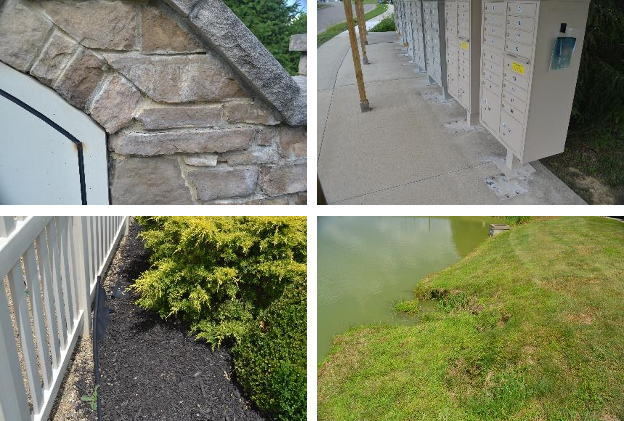
The picture above left shows the barrier between the playground pea gravel and the landscaping mulch already coming up. These small maintenance issues can add up! Above right shows a retention pond that has no erosion control measures. In addition, this pond highlighted that the site map of the property was incorrect.
J. Hershey Building Consultants’ transition studies provide the nitty gritty detail needed to have a robust transition discussion. Our construction method expertise and perspective on reasonable expectations of quality to deliver full transparency and will help avoid unanticipated maintenance
Let’s continue to improve our ability to spot property needs!
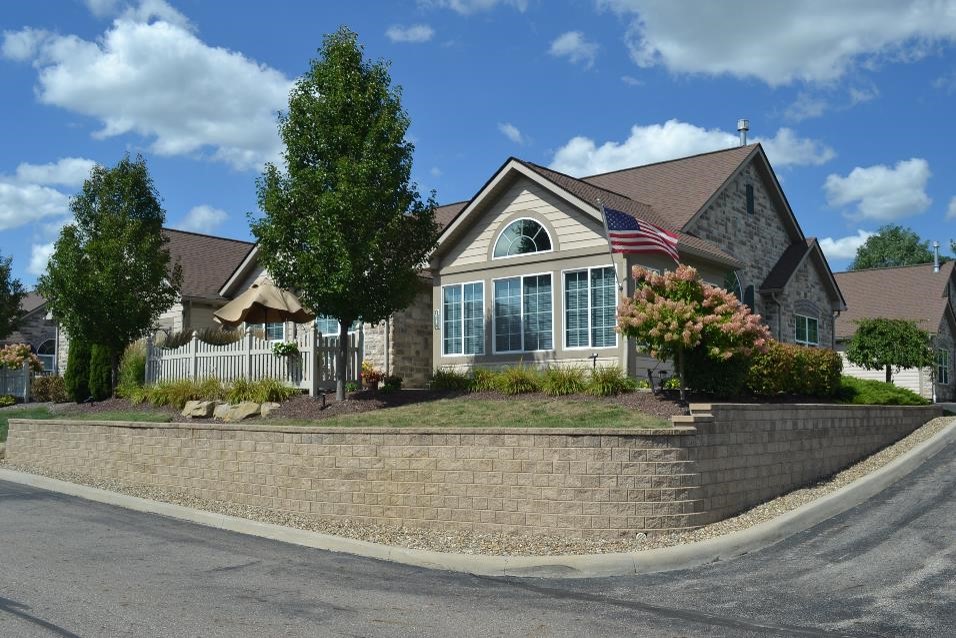
Answer: Life safety hazard. Retaining walls over 30″* should have some form of deterrent to prevent potential of falling over the edge to the sidewalk below. *Minimum wall height depends on governing code.
| Now is the time to complete your Reserve or Transition Study so you have an accurate and detailed funding plan to improve or maintain your properties. We perform Reserve and Transition Studies on all sizes of community associations from single family HOAs to high rise condominiums and every residential building type in between. |

In general, we are seeing actions taken by community associations to protect residents from tragedies such as with the Champlain Towers in Surfside. Recent changes in lending criteria encourage us all to be focused on maintenance needs in the interest of keeping the door open to loans to soften those expenses.
Fannie Mae and Freddie Mac, collectively relied upon by lenders to purchase or guarantee their loans, have updated the standards that must be met to secure a loan. Buildings with deferred maintenance will likely be ineligible to borrow the money to fix their problems and will have to rely on special assessments. This also means that board members “kicking the can” and choosing to avoid structural evaluations or reserve studies which would make transparent the bigger maintenance needs of the property are potentially setting future owners up for an unpleasant, or even impossible, special assessment experience.
I’ve always advocated for Community managers to have bigger roles in board decisions and the training to do so. There is a bias with board members, especially when they know decisions increase their own assessments and don’t perceive their own “renter” mentality. We encourage Association Managers to be more vocal in highlighting the risk to losing the option of a loan to ease the cost of bigger maintenance needs and protecting the value of the property.
This issue of the J. Hershey Blueprint highlights a few examples of creative maintenance approaches designed to work within reserve limitations.

Phasing larger projects over a number of years is a good financial solution to avoid a special assessment or to spread reserves across multiple projects. This approach offsets a large one-time hit to the reserves. The balcony repair project below required new railing installations and sealing of the cantilevered concrete platforms. The more urgent balconies were repaired in the first year, the balance of balconies repaired in year 2 and 3. J. Hershey Building Consultants performed the initial evaluation, repair drawings, and construction monitoring.

Exterior parking areas are usually a work in progress during the best of times. The project below phased the parking area repair by laying new asphalt in half of the lot one year, and completing the lot in year 2.

J. Hershey Building Consultants work with you and your board to prioritize projects and balance existing reserves against current and future needs. We believe reserve studies are not complete without a reasonable action plan of next steps and work with boards to design a pragmatic maintenance and repair schedule.
We see many communities shifting to use composite decking materials in effort to reduce maintenance needs. Composite materials are not all created equal, and have specific installation and maintenance approaches that must be adhered to if you want to avoid issues such as noted below. Below left side pictures show splitting and softening of the boards which can happen if the outer material is not kept properly sealed and the inner material has wood fiber content. Below right pictures show splitting and softening which can happen if the composite boards are not given space to expand and contract, are not properly sealed, or installed close to horizontal surfaces where water accumulates.
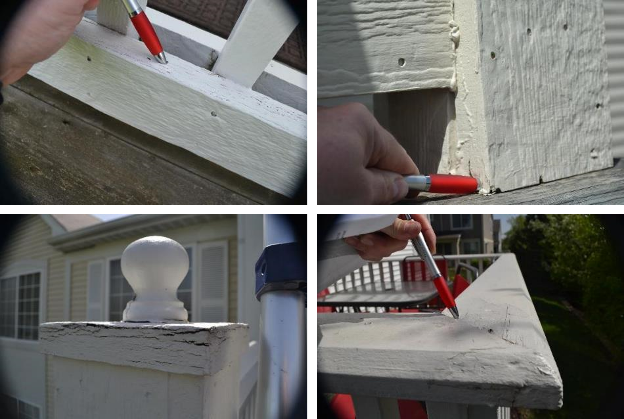
J. Hershey Building Consultants recommend that installation and maintenance of composite deck components and building trim boards include identifying a point person on the board that understands the manufacturer warranty and recommended methods for ongoing maintenance.
J. Hershey Building Consultants and one of our consulting structural engineers is assessing the resolution to a vertical crack in a building stairwell. Cracks may appear in structures as a result of movement, but when the crack extends up through multiple floors there needs to be a structural assessment done to understand cause of the crack and make sure the repair is appropriate to rectify the cause. The pictures below center and right show the crack at two different stairway levels.

Let’s all improve our ability to spot property needs!
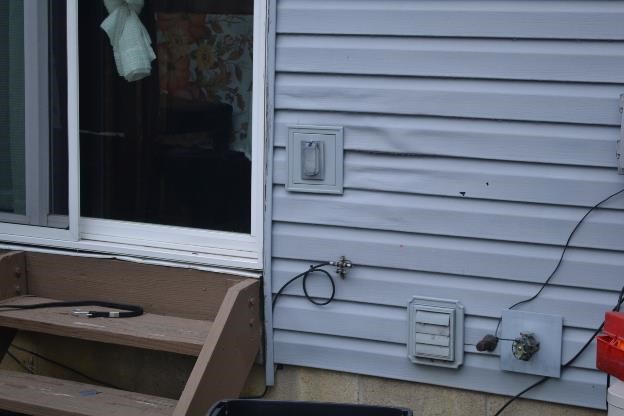
Answer: Some of the vinyl siding is warped. This is likely due to the heat from a barbeque grill used too close to the building. While the siding can be replaced, this was indeed a fire hazard. Local building codes may cover required distance that a grill must be from a structure, typically 10 feet away. Associations should include grill use rules in their agreements. In addition, the homeowner should be encouraged to understand their own homeowners/renters insurance coverage limitations regarding accidents that result from grill use.

J. Hershey Architecture is continuing work with a client on a full basement remodel. While the project is not yet complete, the “close to after” picture on the right showcases how the remodel plan was able to capture the charm of the existing arched window and elevate the space to what will soon be a lovely family room. Note that the pipes have disappeared from the ceiling. Adjacent spaces include a study, laundry room, and full bathroom.


I am a big advocate of requiring Association Managers to frequently visit the properties they manage. We can learn a lot about the property and the resident experience if we visit association grounds in all types of weather. Spring showers bring an opportunity to see how water flows through the property and what our residents face getting from building to car or walking the dog in such weather. I invite you to “Canvas sneaker test” your properties in the rain. Wear a pair of canvas gym shoes and walk your property when it’s raining. How often are you hopping over puddles? If you walk around the building, do mud and standing pools of rainwater create an obstacle course for you? Is the water moving toward a drain or standing still? If we are taking care of the property and grounds, then water is draining as it should and our sneakers should prove out superior maintenance. Dirty sneakers means we have some work to do. Maintenance needs and resident experiences require attention year round. I’d love to hear what you learned on your own “canvas sneaker test!”


Gutters and downspouts are meant to channel water off a roof and move it away from the building. J. Hershey Building Consultants see all manner of downspout solutions while walking properties. Making sure downspouts properly move the water away from the building is easy maintenance if done correctly, and create a host of problems if not. Below left shows downspout water that clearly runs across the front walk of this unit and has eroded the concrete. Below right picture shows downspout water that shifts mulch from a plant bed onto that unit’s entry path.
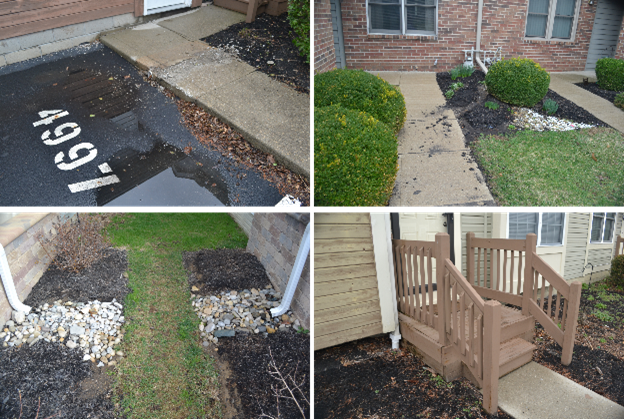
The picture above left shows downspouts that empty on to rocks to diffuse the water flow and reduce splash. In this case, water flows efficiently down a swale between the buildings into a storm drain right outside the picture. Above right, this downspout moves water into an underground drain system, which minimizes ground water in that area and helps the wood stair realize more useful years.
The American Disabilities Act was put in place to create environments more conducive to differing mobility levels. Buildings already built when the ADA was made policy were not expected to immediately remodel to meet code compliance, but as replacements or repairs are made buildings may need to come up to code. Broadly, ADA code compliance is specific to commercial buildings, or commercial components of residential buildings.
Gatehouses are a good example of when ADA code might apply to a residential property. If a gatehouse is purely decorative then there is no need to build the structure ADA compliant. If, however, there is an employee staffing the gatehouse then it would be defined as a commercial component and require ADA compliance.
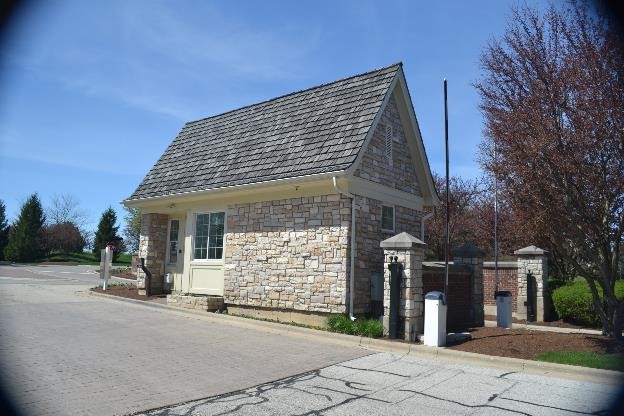
J. Hershey Building Consultants flag any risk to code violations in our reports and take pride in the depth of our code understanding. This expertise helps our clients proactively plan for code compliance rather than face the expensive issues that result from fines and reactive construction as a result of code violation.
While it may feel counterintuitive to have a “hole” in a stone wall or opening around a window, these features enable any water or condensation to evaporate out from between the layers. Without escape, moisture can cause damage to internal parts of the structure in the form of mold or rust.
Below left shows stone cladding falling away from the base of the retaining wall due to trapped moisture. The picture below right shows brick efflorescence, which happens when moisture has to come through the brick to escape.
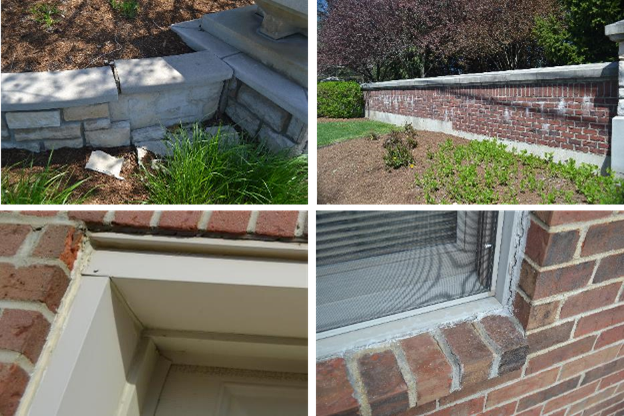
Sealant should be used when dissimilar materials abut, but should not be used to fill weep holes that are meant to allow moisture to escape. J. Hershey Building Consultants observe misuse of sealant frequently.
The picture above left shows sealant around a door frame. The sealant correctly seals the sides of the frame and beneath the steel lintel which runs along the very top of the frame. There is no sealant above the lintel, which is correct as above the lintel is a long weep hole serving to move water across and away from the frame. The picture above right also shows correct placement of sealant, but in this case the cracking indicates the sealant is soon to fail and needs to be replaced.
We try to fit in some education into our newsletters and reports, so we are adding a new section where we will show a picture and explain what is amiss. Let’s all improve our ability to spot property needs!
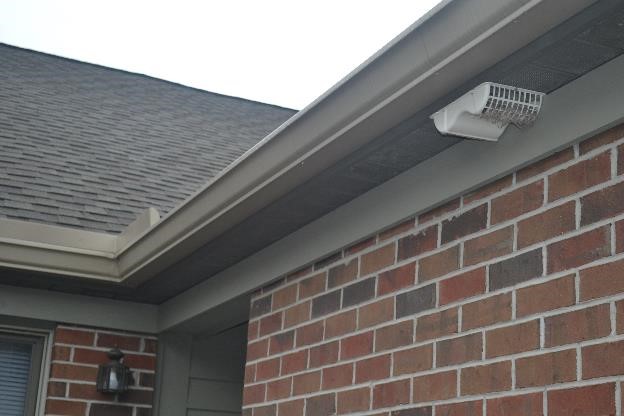
Answer: Dryer vent fire hazard. The curved plastic piece on the underside of the soffit is the output for the dryer vent. The design is likely meant to keep wildlife out of the vent. That said, there is clear buildup of lint in the vent. Lint buildup in dryer vents is one of the leading causes of fires in condo buildings. Associations need to have a plan specific to mitigating this kind of fire hazard: 1) An Association can remind residents to clean their dryer vents but must also conduct physical inspections of all unit vents themselves OR 2) An Association can have unit vents cleaned 2x/year and include the cost in assessments or bill back residents. J Hershey Building Consultants routinely see buildup in dryer vents when conducting reserve studies. An ounce of prevention is needed here!

J. Hershey Architecture is working with a unit owner on a structural issue resulting in a sagging second floor. Using a laser level and measuring distance from ceiling to the level line, it was clear the ceiling is not level. J. Hershey Architecture will determine the cause and design the recommended repairs which are the responsibility of the Association in this case.
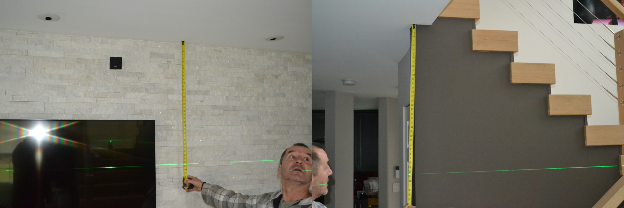

**Many thanks to our clients, our association and management company partners, our industry colleagues and project partners, and the team for another fantastic year of creating healthy and beautiful environments together. Thank you!**